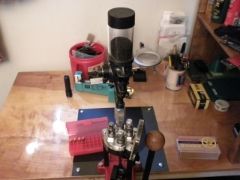I am not familiar with the CZ P-09 but it could have a tighter chamber; my first concern is you did not list your C.O.A.L. Are you within the listed length?
My second concern. I use the Lee dies in a classic turret, the powder through adds a flare, bells the case for the bullet, is your crimp DIE adjusted properly to remove the flare?
I do sort my brass by headstamp but I have never had a problem with the mixed I seem to accumulate of RP, Star Line and S&B. My range pickups are generally a lot of Federal, WCC and Blazer Brass.
Primers – I buy mostly CCI and Winchester.
If I put a cartridge together using the exact components as listed in the manual it was an accident because I rarely use the same exact bullet, case and primer as listed. I do use the correct bullet weight, bullet type, powder weight and C.O.A.L. for the listed load.
My limited usage of BE-86 was with 124gr Gold Dots and Hornady XTP. I used 5.3gr at the listed 1.12 COAL in both; of those that shot the Gold Dots everyone agreed it felt like a +P load. I have not been back to test the Hornady XTP’s. Note that I am below the listed max of 5.9gr.
The link below is to an adapter for adding your powder drop to your press. It has worked great for me using a Lyman 55 that I picked up here in the Equipment Exchange.
Adapter Link

ETA - Welcome to the site and and I wish you success in your reloading.
 Win a FREE Membership!
Win a FREE Membership!